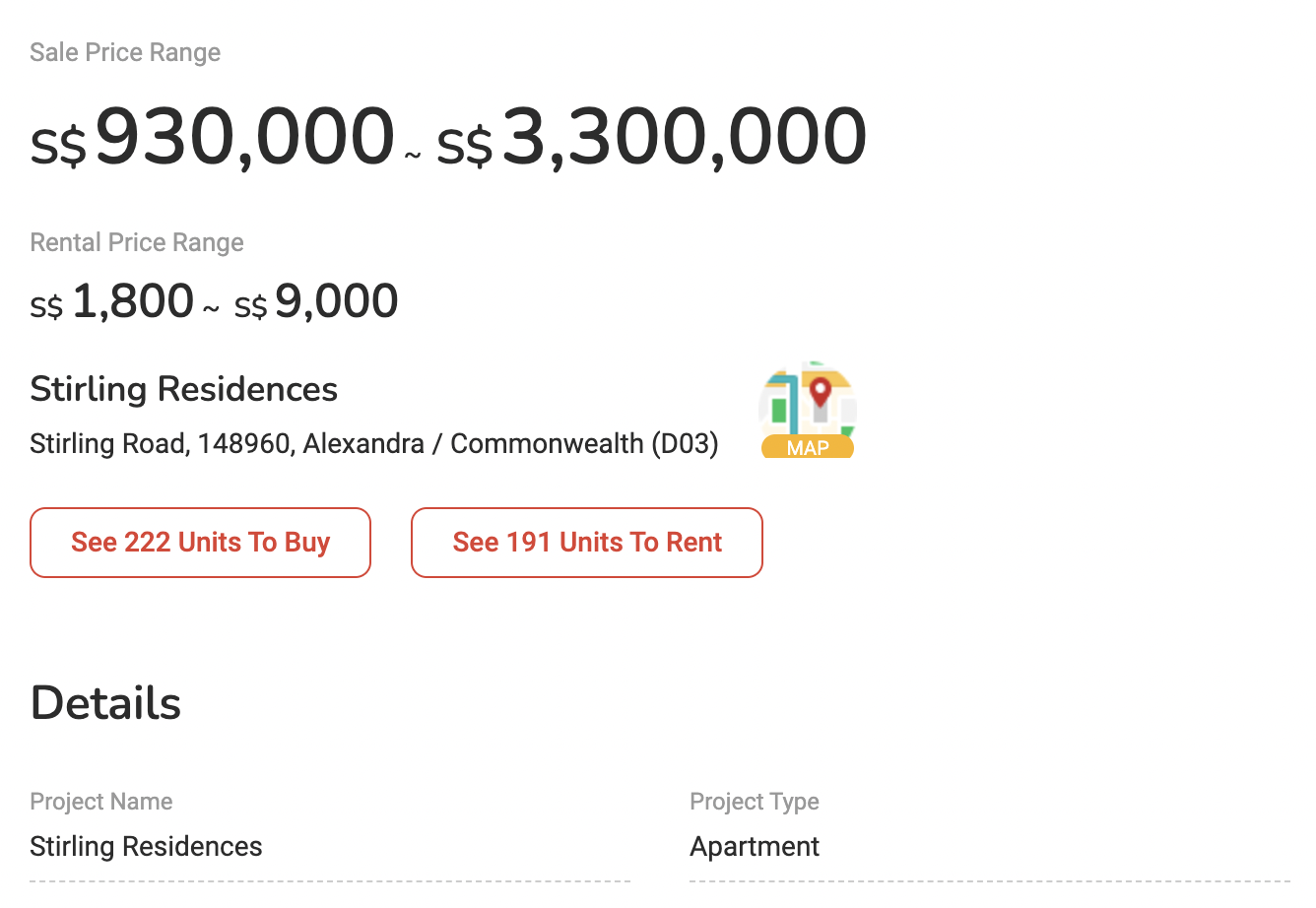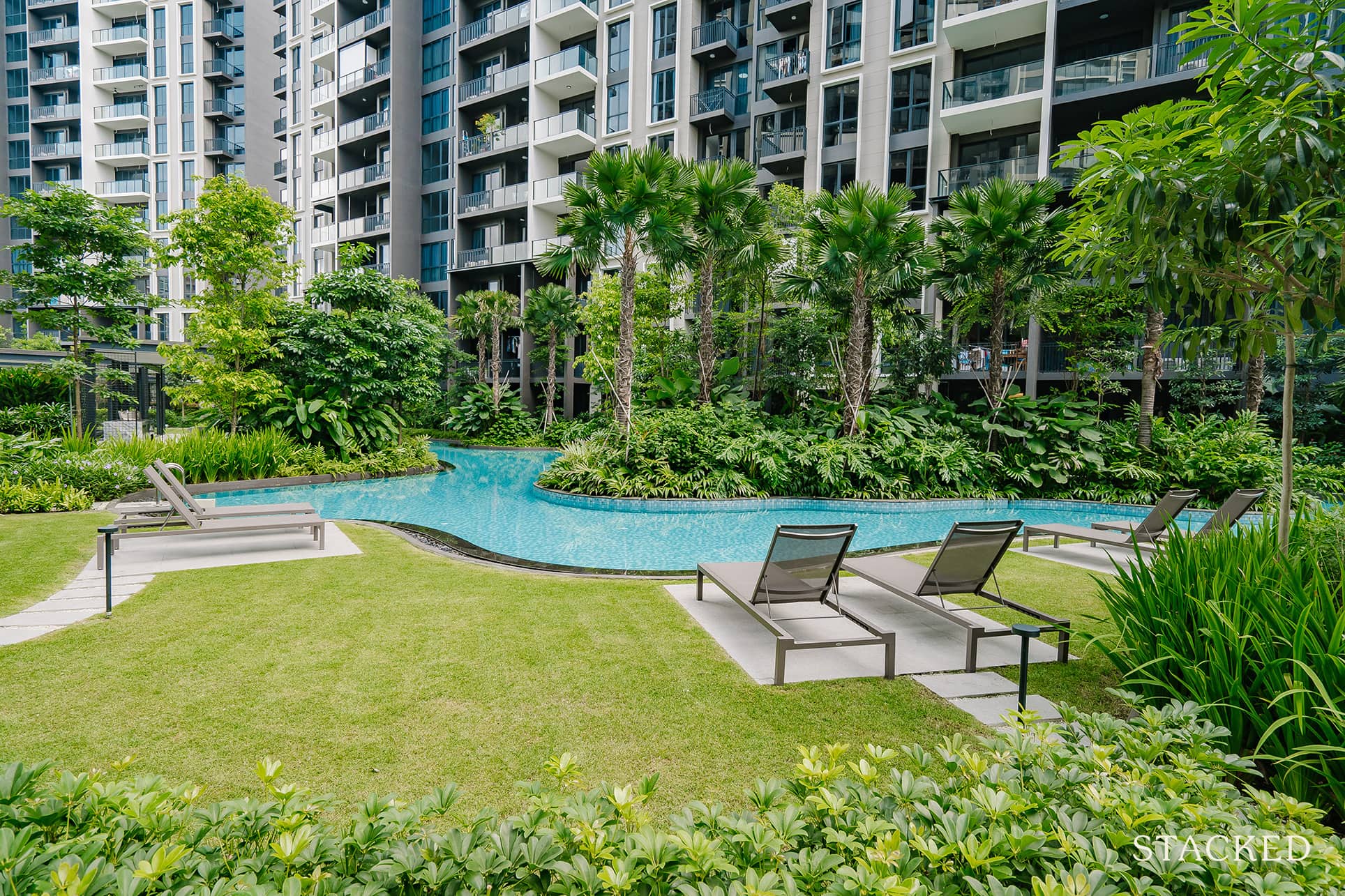9 Key Details About Condo Sub-Sale Units Most People Are Unaware Of

Get The Property Insights Serious Buyers Read First: Join 50,000+ readers who rely on our weekly breakdowns of Singapore’s property market.
A seasoned content strategist with over 17 years in the real estate and financial journalism sectors, Ryan has built a reputation for transforming complex industry jargon into accessible knowledge. With a track record of writing and editing for leading financial platforms and publications, Ryan's expertise has been recognised across various media outlets. His role as a former content editor for 99.co and a co-host for CNA 938's Open House programme underscores his commitment to providing valuable insights into the property market.
There’s gonna be a bumper crop of new launches being completed in 2022 and 2023 (we’ve covered 10 of those here), and as such, more sub-sale units will likely be coming onto the market.
A sub-sale can be a little more complicated, as it’s a three-way deal procedure involving the buyer, seller, and the developer. For these reasons, it’s not too common, and the transaction process is a bit obscure. In case you’re interested in selling or buying sub-sale units, here are some of the issues to be aware of:
Table Of Contents
- 1. Be aware of the SSD period
- 2. The CSC, not the TOP, is the official date for determining sub-sales
- 3. A new Sale & Purchase (S&P) Agreement is needed
- 4. There may be a prepayment penalty for selling a sub-sale unit
- 5. You may have a team of realtors, rather than just one
- 6. If you’re in the first wave, you can consider holding out for a better price
- 7. Sub-sales can provide a good exit when the market is at a standstill
- 8. If you own a bigger unit, you could end up finding sub-sale buyers even within the same project
- 9. When looking at new development prices, be aware that some listings may be sub-sales
1. Be aware of the SSD period
The SSD is payable if you sell your property within the first three years of buying it. The SSD is 12 per cent in the first year, eight per cent in the second year, and four per cent in the third year. But it is possible that SSD may not apply, if the original buyer purchased the unit early in the launch.
For example: if the condo takes five years to complete, but you purchase a unit in the first year and sell on the fourth, you would be outside the three-year SSD period.
When SSD does apply, the seller will almost always mark-up the price to cover the stamp duty. Just like the stunning Boulevard 88 sub-sale unit that was bought at $9.38 million and sold for $12.5 million – making a gain of $3.12 million (aside from the 4% SSD). As such, the best sub-sale deals are usually units near completion, but also outside the SSD period.
So do calculate your timelines correctly, to avoid paying any unnecessary fees.

2. The CSC, not the TOP, is the official date for determining sub-sales
URA considers a transaction to be a sub-sale if it occurs before a development receives the Certificate of Statutory Completion (CSC). Note that the CSC is not the same as the Temporary Occupancy Permit (TOP).
It’s possible to purchase a unit after TOP and still be counted as making a sub-sale transaction, if the CSC is not yet granted.
3. A new Sale & Purchase (S&P) Agreement is needed
For a sub-sale to take place, the new buyer must enter into a new S&P Agreement with the developer. The developer just needs to be informed of the sub-sale for it to take place. You still have all the same rights as the first buyer, so there’s no need to worry about the defects during the Defect Liability Period.
Drafting the new agreement requires the services of a law firm, with prices being roughly around $640+. The fee aside, it can take a minimum of 12 weeks for all the paperwork to be settled.
It’s advisable to use the same law firm that handled the first S&P Agreement (i.e., the one the original buyers used). This can sometimes shave time off the process, as they’ve already worked with the original buyer and the developer.
4. There may be a prepayment penalty for selling a sub-sale unit
If you used a bank loan to purchase a unit, and subsequently sell it as a sub-sale, you’ll have to pay off the outstanding loan with the sale proceeds. For some banks, this might mean incurring a prepayment penalty.
Prepayment penalties tend to be 1.5 per cent of the undisbursed loan amount; but this would get quite messy for sub-sales.
This is because new developments often use a Progressive Payment Scheme, in which the bank disburses payments based on completion milestones. Under this scheme, only 85 per cent of the loan would be disbursed by the time the property receives its TOP. The last 15 per cent is usually only disbursed upon CSC.

Property AdviceCondo Progressive Payment in Singapore – All you need to know
by Druce TeoAs such, the bank often considers the last 15 per cent to be the undisbursed loan amount; and the prepayment penalty is based on this sum.
For example: for a loan of $1.25 million, the undisbursed loan amount (15 per cent) would be $187,500. At a penalty of 1.5 per cent, this is a fee of $2,812.50 for prepayment.
If you want to avoid prepayment penalties, you can consider loan packages that waive such fees in the event of a sale. Speak to a mortgage broker to review such terms and conditions.
5. You may have a team of realtors, rather than just one
Agents tell us that multiple listings may sometimes be helpful to move a specific sub-sale property, rather than just one.

This is partly to do with competition for visibility: before a project is complete, the developers’ sales teams are also blasting one listing after another to promote the new project. It’s quite hard for your one specific listing to stand out. Some agents may add on services such as rendering to help the unit stand out given it’s not a completed project yet, this can be useful to attract more buyers too.
Specialised teams, who are also more familiar with marketing sub-sale units, can also be helpful – they may have a wider range of prospects, willing to purchase under such conditions.
Your property agent(s) can lay out the specific details here, along with any differences in service fees.
6. If you’re in the first wave, you can consider holding out for a better price
If you were one of the earlier buyers (i.e., way before TOP), there’s a good chance you have one of the better units. This is on the assumption that, as an earlier buyer, you would have picked a favourable stack, or a unit with better facing, unique features, etc.

The second wave of buyers, such as those who come just after TOP, are often left with a more limited selection of units. In theory, it should be the least desirable units that are left to them.
In this scenario, you might consider sticking to your higher asking prices, for a longer period (but do remain realistic, and aware of wider market conditions).
7. Sub-sales can provide a good exit when the market is at a standstill
From a strict investment perspective, a property market that’s at a standstill can be bad news. You would have a significant amount of capital locked up in the property, which isn’t seeing good appreciation. In situations like this, it might be worth trying to offload the unit at minimal cost, and re-investing elsewhere.
Even with higher costs tacked on (e.g., due to SSD), there’s a good chance you’ll see interest because the unit is near completion.
8. If you own a bigger unit, you could end up finding sub-sale buyers even within the same project
One problem with new developments is that nothing exists yet – while floor plans exist, a lot is left to the imagination. Agents tell us that sometimes, buyers end up disappointed with the actual size of their unit; this may happen after TOP, but before CSC.

However, those buyers still like the specific project. As such, this can result in attempts to upgrade within the development itself. If you own a larger unit in the project, you may find surprisingly strong demand from this batch of buyers; and offers may be good enough to justify a sub-sale to them.
Do consider this size factor, when picking your unit.
9. When looking at new development prices, be aware that some listings may be sub-sales
When you search for a new property on a portal, listings for the same project may not specify whether it’s just another developer listing, or a private seller (sub-sale). It can be helpful to differentiate between the two.
A seller trying to offload a sub-sale unit can be more open to negotiation, whereas developers are more fixed about the pricing. A private seller facing a change in financial situation, for instance, may have a more urgent need to offload the property – and that could translate to a lower price.
For more on the Singapore private property market, follow us on Stacked. We’ll also provide you with in-depth reviews of new and resale properties alike, so you can make a better-informed decision.
If you’d like to get in touch for a more in-depth consultation, you can do so here.
Have a real estate question, or not sure what your options are? Email us at stories@stackedhomes.com.
Ryan J. Ong
A seasoned content strategist with over 17 years in the real estate and financial journalism sectors, Ryan has built a reputation for transforming complex industry jargon into accessible knowledge. With a track record of writing and editing for leading financial platforms and publications, Ryan's expertise has been recognised across various media outlets. His role as a former content editor for 99.co and a co-host for CNA 938's Open House programme underscores his commitment to providing valuable insights into the property market.Read next from Property Advice

Property Advice Should We Buy An Old 99-Year Leasehold Condo To Live In: Will It’s Value Fall When The Lease Runs Out?

Property Advice We Own A $800K 1-Bedder And A $1.1M 3-Bedder: Is It Possible To Upgrade To A 4-Bedder Condo?

Property Advice I Own A 55-Year-Old HDB Flat, But May Have To Sell — Can I Realistically Buy A Freehold Condo With $700K?

Property Advice We Own A 2-Bedder Condo In Clementi: Should We Decouple To Buy A Resale 3 Bedder Or Sell?
Latest Posts
Uncategorized
Notre Avis sur Betify Casino – Partie 4
Uncategorized
Notre Avis sur Betify Casino – Partie 207

Pro How A Once “Ulu” Condo Launched In 1997 Became A Top Performer

Editor's Pick I Reviewed A New Launch 4-Bedroom Penthouse At Beauty World

Property Market Commentary When Renting In Singapore Is The Smarter Move — And Buying Can Wait

Editor's Pick Why Singaporean Families Are Looking At This Landed Enclave From Around $4M

Singapore Property News Lentor’s First Condo Is Complete — The Early Profits May Surprise You

Editor's Pick A Wave Of New HDB Resale Supply Is Coming In 2026: Here’s Where To Find Them

On The Market These Are Some Of The Cheapest 5-Room HDB Flats Left In Central Singapore

Pro This 698-Unit Ang Mo Kio Condo Launched At The Wrong Time — And Still Outperformed Peers

Singapore Property News $281.2M in Singapore Shophouse Deals in 2H2025 — But That Number Doesn’t Tell the Full Story

Property Market Commentary 5 Key Features Buyers Should Expect in 2026 New Launch Condos

Editor's Pick What “Lucky” Singaporean Homebuyers Used To Get Away With — That You Can’t Today

Property Investment Insights These Resale Condos In Singapore Were The Top Performers In 2025 — And Not All Were Obvious Winners

Singapore Property News CapitaLand–UOL’s $1.5 Billion Hougang Central Bid May Put Future Prices Above $2,500 PSF


